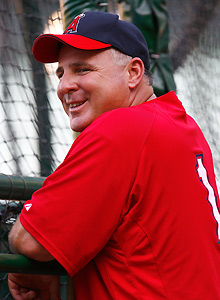THE CORPSE of Ferdinand Marcos, who died in exile in Hawaii in 1989, lies unburied in a family museum in Batac, Ilocos Norte. Imelda Marcos, now a member of the House of Representatives, insists that she will allow nothing less than a hero’s burial for her husband’s waxen remains. More than 200 of her fellow representatives have signed a resolution asking President Aquino, whose father was murdered by the regime, to authorize the late dictator’s burial at the nation’s Libingan ng mga Bayani.
This congressional action stinks. It seeks not merely to legislate collective amnesia but to re-write history. In effect, it revises the meaning of the heroic people power events that culminated in the termination of the dictatorship in February 1986. It is perhaps not a coincidence that this congressional initiative is being launched in the wake of the 25th anniversary of the Edsa revolution. They’re testing the waters. And, Sen. Ferdinand Marcos Jr. is not even president yet!
Note that the Marcos family never expressed any remorse over the abuses and crimes of the regime. Hence, they do not seek forgiveness. Not a single Marcos has been jailed for crimes committed against the Filipino people. Yet, instead of viewing this as the achievement of clever lawyers in a dysfunctional justice system, they treat it as a vindication of their innocence. Hence, they want Ferdinand Marcos to take an honored place among the nation’s heroes. Clearly, they are not asking the nation to forget the past; they want the nation to revise its remembrance of the past.
This move requires a radical re-wiring of our collective memory. We cannot honor Marcos as a hero without implying that overthrowing him was a mistake. We cannot give him a hero’s burial without signifying at the same time that the thousands who were made to disappear or killed by his henchmen deserve to rot in the unmarked graves into which they were dumped. We cannot positively remember Marcos today without spitting on the courage of those who fought his dictatorial rule. Those who think that this issue is all about laying a corpse to rest in a remote corner of this country are mistaken. A program of myth-making that aims to supplant memory has already been set in motion. Its end-point is not the burial, but the resurrection of Marcos.
Unfortunately, culture is on the side of those who signed the resolution. Indeed, our religious traditions prompt us to forgive and to forget. Diverse and sometimes contradictory emotions are being tapped in order to make burying Marcos at the Libingan ng mga Bayani the most worthy thing the nation can do. By focusing on the request to bury him in a cemetery reserved for war veterans, the Marcos family and their congressional supporters are trying to simplify what is in reality a complex decision filled with many ramifications. For now, we are being cued to think simply of Marcos as the brave war hero who deserves to lie in the company of his World War II comrades. Whatever you might say of him, the argument goes, it cannot be denied that Marcos fought for his country during the war. There is no reference to what he did to the Filipino people after he placed the country under martial law in 1972.
It is natural for us to feel resentful when somebody has wronged us. But in time we outgrow our resentment and we manifest this by not being vengeful in our actions. We call this forgiveness. But two things must be said in this regard. One, we may forgive not because we excuse the offense committed against us, but because we don’t want to be the prisoners of hate. Thus, we view forgiveness as something we owe to ourselves. Two, we may forgive, but forgiving does not require that we also forget. “There is no general duty to forget, not even in the truncated sense of duty to ourselves, since who we are depends on our not forgetting things that happened and that are important in our lives,” writes the Jewish philosopher Avishai Margalit.
In his brilliant book, “The ethics of memory,” Margalit ponders the memory of the Holocaust with the urgency of someone who wishes to overcome resentment over past hurts without forgetting the past. “What ought to be blotted out,” he says, “is the memory of the emotion in the sense of reliving it, not in the sense of remembering it.”
If a survey were taken today, it may show that a majority of our people have forgiven Marcos. But those who suffered personal injury under his regime may not be inclined to do so. It is upon them that the burden of forgiveness weighs most heavily. The ethics of forgiveness is a very demanding one. It commands us to forgive, even when there is no repentance, as a duty to ourselves. It admonishes us to forget the humiliation and the suffering we associate with the past, even as we continue to remember the past. Can we override the deep injury done to us and the nation, and forgive, so we can get on with our lives—without blotting out the past? And, assuming we have forgiven Marcos, does this oblige us to honor him with a hero’s burial?
My view, like Margalit’s, is that we must learn to forgive, but we must not forget. We must continue to remember not because we cannot leave the past behind, but because, living in the present, we have a duty to see to it that the seductions of authoritarianism do not ever again take root in our nation’s psyche. To forgive Marcos is one thing, but to honor him with a hero’s burial is to tell our people that it’s all right for another adventurer in the future to trample upon democracy and seize power for himself.















